| Photo | Name | Term in office | Party | Governor |
|---|
|  | | Pierre Van Cortlandt | July 30, 1777 – June 30, 1795 | Democratic-Republican Party | | George Clinton |
| 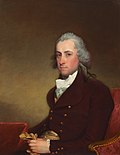 | | Stephen Van Rensselaer | July 1, 1795 – June 30, 1801 | Federalist Party | | John Jay |
| 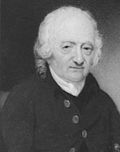 | | Jeremiah Van Rensselaer | July 1, 1801 – June 30, 1804 | Democratic-Republican Party | | George Clinton |
|  | | John Broome | July 1804 – August 8, 1810 | | Morgan Lewis |
| | Daniel Tompkins |
| Office vacant from August 8, 1810– January 29, 1811 | |
| – | 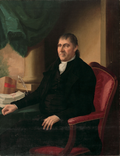 | | John Tayler | January 29 – May 2, 1811 | Democratic-Republican Party | |
| 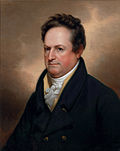 | | DeWitt Clinton | May 2, 1811 – July 1, 1813 | Democratic-Republican Party | |
|  | | John Tayler | July 1, 1813 – February 24, 1817 | |
| – |  | | Philetus Swift | February 24, 1817 – June 30, 1817 | Democratic-Republican Party | | John Tayler (Acting) |
|  | | John Tayler | July 1, 1817 – December 31, 1822 | Democratic-Republican Party | | DeWitt Clinton |
|  | | Erastus Root | January 1 – December 31, 1823 | | Joseph C. Yates |
|  | | James Tallmadge Jr. | January 1, 1825 – December 31, 1826 | | DeWitt Clinton |
| | | Nathaniel Pitcher | January 1, 1827 – February 10, 1828 | |
| – | | | Peter R. Livingston | February 11 – October 17, 1828 | Democratic-Republican Party | | Nathaniel Pitcher |
| – |  | | Charles Dayan | October 17 – December 31, 1828 | |
|  | | Enos T. Throop | January 1 – March 12, 1829 | Democratic Party | | Martin Van Buren |
| – | | | Charles Stebbins | 1829–1829 | Democratic Party | | Enos T. Throop |
| – | | | William M. Oliver | 1830–1830 | |
|  | | Edward P. Livingston | 1831–1832 | Democratic Party | |
|  | | John Tracy | January 1, 1831 – December 31, 1838 | | William L. Marcy |
| 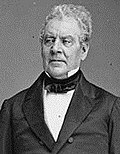 | | Luther Bradish | January 1, 1839 – December 31, 1842 | Whig Party | | William H. Seward |
|  | | Daniel S. Dickinson | January 1, 1843 – December 31, 1844 | Democratic Party | | William C. Bouck |
|  | | Addison Gardiner | January 1, 1845 – July 5, 1847 | Democratic Party | | Silas Wright |
| | John Young |
| – | | | Albert Lester | July 5 – December 31, 1847 | Whig Party | |
|  | | Hamilton Fish | January 1 – December 31, 1848 | Whig Party | |
| 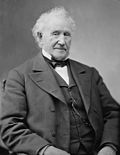 | | George W. Patterson | January 1, 1849 – December 31, 1850 | | Hamilton Fish |
|  | | Sanford E. Church | January 1, 1851 – December 31, 1854 | Democratic Party | | Washington Hunt |
| | Horatio Seymour |
|  | | Henry J. Raymond | January 1, 1855 – December 31, 1856 | Whig Party | | Myron H. Clark |
| 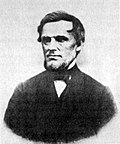 | | Henry R. Selden | January 1, 1857 – December 31, 1858 | Republican Party | | John A. King |
| | | Robert Campbell | January 1, 1859 – December 31, 1862 | | Edwin D. Morgan |
| | | David R. Floyd-Jones | January 1, 1863 – December 31, 1864 | Democratic Party | | Horatio Seymour |
|  | | Thomas G. Alvord | January 1, 1865 – December 31, 1866 | Union Party | | Reuben Fenton |
|  | | Stewart L. Woodford | January 1, 1867 – December 31, 1868 | |
|  | | Allen C. Beach | January 1, 1869 – December 31, 1872 | Democratic Party | | John T. Hoffman |
|  | | John C. Robinson | January 1, 1873 – December 31, 1874 | Republican Party | | John A. Dix |
|  | | William Dorsheimer | January 1, 1875 – December 31, 1879 | Democratic Party | | Samuel Tilden |
| | Lucius Robinson |
| 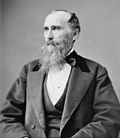 | | George G. Hoskins | January 1, 1880 – December 31, 1882 | Republican Party | | Alonzo B. Cornell |
| 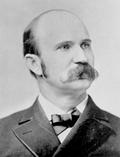 | | David B. Hill | January 1, 1883 – January 6, 1885 | Democratic Party | | Grover Cleveland |
| – |  | | Dennis McCarthy | January 6 – December 31, 1885 | Republican Party | | David B. Hill |
|  | | Edward F. Jones | January 1, 1886 – December 31, 1891 | Democratic Party | |
|  | | William F. Sheehan | January 1, 1892 – December 31, 1894 | | Roswell P. Flower |
|  | | Charles T. Saxton | January 1, 1895 – December 31, 1896 | Republican Party | | Levi P. Morton |
|  | | Timothy L. Woodruff | January 1, 1897 – December 31, 1902 | | Frank S. Black |
| | Theodore Roosevelt |
| | Benjamin Odell |
|  | | Frank W. Higgins | January 1, 1903 – December 31, 1904 | |
|  | | Matthew L. Bruce | January 1, 1905 – December 5, 1906 | | Frank W. Higgins |
| – |  | | John Raines | December 5 – 31, 1906 | Republican Party | |
|  | | Lewis S. Chanler | January 1, 1907 – December 31, 1908 | Democratic Party | | Charles Evans Hughes |
|  | | Horace White | January 1, 1909 – October 6, 1910 | Republican Party | |
| – |  | | George H. Cobb | October 6 – December 31, 1910 | Republican Party | | Horace White |
|  | | Thomas F. Conway | January 1, 1911 – December 31, 1912 | Democratic Party | | John A. Dix |
|  | | Martin H. Glynn | January 1 – October 17, 1913 | | William Sulzer |
| – |  | | Robert F. Wagner | October 17, 1913 – December 31, 1914 | Democratic Party | | Martin H. Glynn |
| 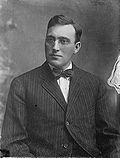 | | Edward Schoeneck | January 1, 1915 – December 31, 1918 | Republican Party | | Charles S. Whitman |
|  | | Harry C. Walker | January 1, 1919 – December 31, 1920 | Democratic Party | | Al Smith |
|  | | Jeremiah Wood | January 1, 1921 – September 26, 1922 | Republican Party | | Nathan L. Miller |
| – |  | | Clayton R. Lusk | September 26 – December 31, 1922 | Republican Party | |
|  | | George R. Lunn | January 1, 1923 – December 31, 1924 | Democratic Party | | Al Smith |
|  | | Seymour Lowman | January 1, 1925 – December 31, 1926 | Republican Party | |
| 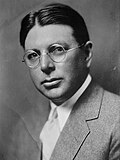 | | Edwin Corning | January 1, 1927 – December 31, 1928 | Democratic Party | |
| 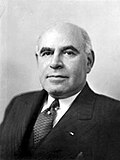 | | Herbert H. Lehman | January 1, 1929 – December 31, 1932 | | Franklin D. Roosevelt |
| 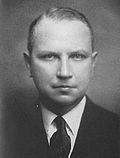 | | M. William Bray | January 1, 1933 – December 31, 1938 | | Herbert H. Lehman |
| 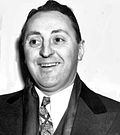 | | Charles Poletti | January 1, 1939 – December 3, 1942 | |
| – |  | | Joe R. Hanley | December 3 – 31, 1942 | Republican Party | | Charles Poletti |
|  | | Thomas W. Wallace | January 1 – November 2, 1943 | Republican Party | | Thomas E. Dewey |
|  | | Joe R. Hanley | November 2, 1943 – December 31, 1950 | |
|  | | Frank C. Moore | January 1, 1951 – September 30, 1953 | |
| – |  | | Arthur H. Wicks | September 30 – November 18, 1953 | Republican Party | |
| – |  | | Walter J. Mahoney | November 18, 1953 – December 31, 1954 | |
|  | | George DeLuca | January 1, 1955 – December 31, 1958 | Democratic Party | | W. Averell Harriman |
|  | | Malcolm Wilson | January 1, 1959 – December 18, 1973 | Republican Party | | Nelson Rockefeller |
| – |  | | Warren M. Anderson | December 18, 1973 – December 31, 1974 | Republican Party | | Malcolm Wilson |
|  | | Mary Anne Krupsak | January 1, 1975 – December 31, 1978 | Democratic Party | | Hugh Carey |
|  | | Mario Cuomo | January 1, 1979 – December 31, 1982 | |
| | | Alfred DelBello | January 1, 1983 – February 1, 1985 | | Mario Cuomo |
| – |  | | Warren M. Anderson | February 1, 1985 – December 31, 1986 | Republican Party | |
|  | | Stan Lundine | January 1, 1987 – December 31, 1994 | Democratic Party | |
|  | | Betsy McCaughey Ross | January 1, 1995 – December 31, 1998 | Republican Party | | George Pataki |
| | | Mary Donohue | January 1, 1999 – December 31, 2006 | |
| 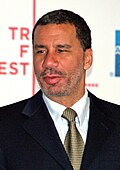 | | David Paterson | January 1, 2007 – March 17, 2008 | Democratic Party | | Eliot Spitzer |
| – | 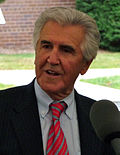 | | Joseph Bruno | March 17 – June 24, 2008 | Republican Party | | David Paterson |
| – |  | | Dean Skelos | June 24 – December 31, 2008 | |
| Office vacant fromDecember 31, 2008 – January 7, 2009 |
| – |  | | Malcolm Smith | January 7 – June 8, 2009 | Democratic Party | |
| – |  | | Pedro Espada | June 8 – July 8, 2009 | |
| 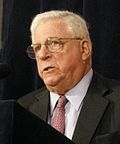 | | Richard Ravitch | July 8, 2009 – December 31, 2010 | Democratic Party | |
|  | | Robert Duffy | January 1, 2011 – December 31, 2014 | | Andrew Cuomo |
|  | | Kathy Hochul | January 1, 2015 – August 23, 2021 | |
| – |  | | Andrea Stewart-Cousins | August 24 – September 9, 2021 | Democratic Party | | Kathy Hochul |
|  | | Brian Benjamin | September 9, 2021 – April 12, 2022 | Democratic Party | |
| – |  | | Andrea Stewart-Cousins | April 12 – May 25, 2022 | Democratic Party | |
|  | | Antonio Delgado | May 25, 2022 – Incumbent | Democratic Party | |










































































